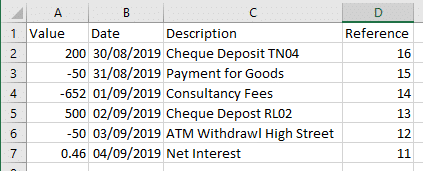

Next, we will use the Conditional Column command, which is quite useful in cleaning up and organizing bank data.A dialog box will appear asking for the number of rows that need to be removed. Use the Remove Rows option to remove any unwanted data that has been exported from the PDF.Right-click on the Column to rename the columns as required.Your data will then show up in the Power Query Editor, where you can clean it up. In the file data preview, click on Transform Data or Edit (depending on your OS).Select the CSV file downloaded earlier, then click on Get Data, then click Next.Under Choose Data Source, select Text/CSV.To clean the bank activity, you will need the Power Query Add-in in Excel. Cleaning up will allow your data to be more concise and easier to read.Source: Step 2: Cleaning up your bank activity In the Navigator box, click on the desired item and click Transform Data or if it is clean, you can directly Load to > Excel.Use Data > Get Data > From File > From PDF and click Import.Unfortunately, this option is not available for users on alternative operating systems.
#Convert pdf bank statement to csv for windows#
Step 1: Converting PDF files to CSV Step 1a: Using Power Query to import data from a PDF fileĪlternatively, on Windows OS, you can directly use Power Query to import data from a PDF file, without having to convert it to a CSV first. Adobe Online (Supports converting an XLSX file that can be saved as a CSV).The following websites can convert PDF files to CSV for free: While most banks now allow importing of bank statements directly into the CSV format, occasionally you may need to convert a PDF of a bank statement into a CSV file that can be opened with Microsoft Excel or Google Sheets.


 0 kommentar(er)
0 kommentar(er)
